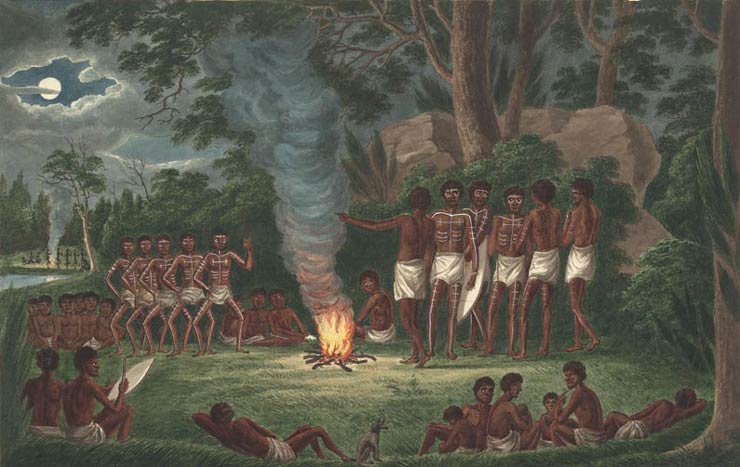 Corroboree, c1817
Corroboree, c1817
TLF ID R4015
This is a 17.7 cm x 27.7 cm watercolour showing Indigenous Australian men at a moonlit, night-time corroboree around a central fire in a bush clearing. Five men are dancing in a line on one side of the fire, while another six men stand on the other side, all painted with white ochre ceremonial markings on their legs, arms and chests. Several small groups of men are sitting or lying on the ground, most watching the dancers. One onlooker is using his shield as a drum and one of the dancers also carries a shield. All are wearing white loincloths. In the distance the silhouettes of several people can be seen in front of another campfire near a lake.
